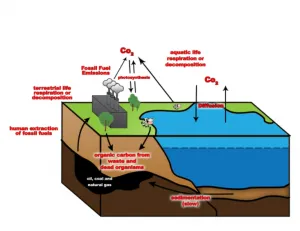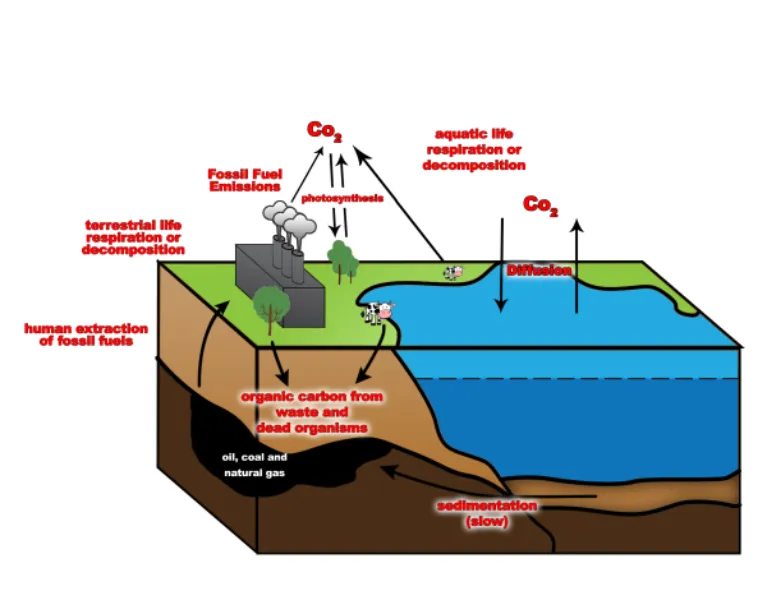How to Describe an Image for IELTS Task 1 (8 Step Plan)
Mục Lục
How to describe an image or diagram in academic task 1

In this podcast, you get a complete and detailed tutorial on how to describe a diagram/graphic for your IELTS academic writing task 1.
We also cover those same eight steps in the article below, so give it a thorough read when preparing for your IELTS academic writing exam.
Describing a diagram for IELTS academic writing: task 1
Describing a diagram or a graphic for your IELTS exam can seem like a scary task. However, all you need to do is have a clear understanding of what is expected of you.
Strategy for describing a diagram
Let’s begin with the general outline.
First, pay attention to the title of the diagram – this will tell you what the diagram shows.
Next, examine the diagram. Pay close attention to:
- The main parts of the diagram
- The relationship between these parts
- Any further explanations
Lastly, keep in mind that your text must contain at least 150 words. Try to spend around 20 minutes on this task.
Remember that you have to describe the diagram itself, not why it is used.
Organize a structure for your description
Create a plan for your description. The structure usually contains three parts: the introduction, the main body of text, and the summary.
Don’t worry if you don’t know any technical words. Use your own words to describe the diagram.
-
Introduction
In the introduction of your Diagram Description write about the purpose of the diagram.
-
The main body of text
Use the main body of text to outline a step-by-step explanation of the diagram.
-
Summary
In the summary sum up the principal idea of the diagram. Usually, one short paragraph is enough.
8 Steps to describe a diagram for IELTS academic writing: task 1
Now that we know how to structure the overall description of a diagram, we can continue onto other important parts that will gain you better marks.
Here’s a list of eight steps to help you write an excellent description for a diagram, and in turn gain you good marks!
So let’s do this together, step-by-step.

Step one
Read the title and the image of the diagram, and write about it – this will be your introduction.
This image clearly illustrates the carbon cycle.
Step two
Describe the diagram in detail – this will be your main body of text.
Carbon-dioxide is released into the atmosphere by aquatic and terrestrial life respiration or the decomposition of plant and animal life.
This CO2 is used in photosynthesis for the growth of plants and nourishment of animals.
These organisms die and decompose. This decomposition and waste are transformed into carbon.
Carbon-dioxide is diffused into the ocean through precipitation when gases in the atmosphere are transformed to water.
If the decomposition of carbon in the seabed and land is interrupted, it leads to the development of fossil fuels, such as oil, coal and gas.
These fossil fuels are extracted from the earth for human use.
During manufacturing processes, factories release fossil fuel emissions (including CO2) back into the atmosphere.
Step three
Add sequencing words to your text in order to connect your descriptive sentences and make it flow better.
Firstly, Carbon-dioxide is released into the atmosphere by aquatic and terrestrial life respiration or the decomposition of plant and animal life.
Next, this CO2 Is used in photosynthesis for the growth of plants and nourishment of animals.
Once these organisms die and decompose, this waste and decomposition is transformed into carbon.
Additionally, carbon-dioxide is diffused into the ocean through precipitation when gases in the atmosphere are transformed to water.
Step four
Make sure to include passive form in the description to define an action that is done.
In the ocean, this CO2 is converted into sedimentation in the seabed.
Step five
Make sure you paraphrase your second and third lines to avoid redundancy
Next, this CO2 is used in photosynthesis for the growth of plants and nourishment of animals.
Once these organisms die, they are transformed into carbon.
Paraphrasing: plants and animals = organisms.
Step six
Include conditionals and adverb clauses to indicate possible outcomes when describing the diagram.
Real conditional
If the decomposition of carbon in the seabed and land is interrupted, it leads to the development of fossil fuels, such as oil, coal and gas.
Adverb Clause
Once these organisms die, they are transformed into carbon.
Step seven
Write a clear summary of the principle idea of the diagram in one short paragraph.
This graph clearly indicates the cycle of carbon through the land and oceans.
Step eight
Read through your written work to check for any errors.
Here’s our final text – proofread it for any mistakes and errors.
Firstly, carbon-dioxide is released into the atmosphere by aquatic and terrestrial life respiration or the decomposition of plant and animal life.
Next, this CO2 Is used in photosynthesis for the growth of plants and nourishment of animals.
Once these organisms die and decompose, this waste and decomposition is transformed into carbon. Additionally, carbon-dioxide is diffused into the ocean through precipitation when gases in the atmosphere are transformed to water. In the ocean, this CO2 is converted into sedimentation in the seabed through the decomposition of marine animals. If the decomposition of carbon in the seabed and land is interrupted, it leads to the development of fossil fuels, such as oil, coal and gas. These fossil fuels are extracted from the earth for human use. During manufacturing processes, factories release fossil fuel emissions (including CO2) back into the atmosphere.
This diagram clearly indicates the cycle of carbon through the land and oceans.
More useful IELTS Academic Task 1 lessons:
Audio tutorial
| Stitcher | iTunes | Podcast: Play in new window | Download | Subscribe:















![Toni Kroos là ai? [ sự thật về tiểu sử đầy đủ Toni Kroos ]](https://evbn.org/wp-content/uploads/New-Project-6635-1671934592.jpg)


